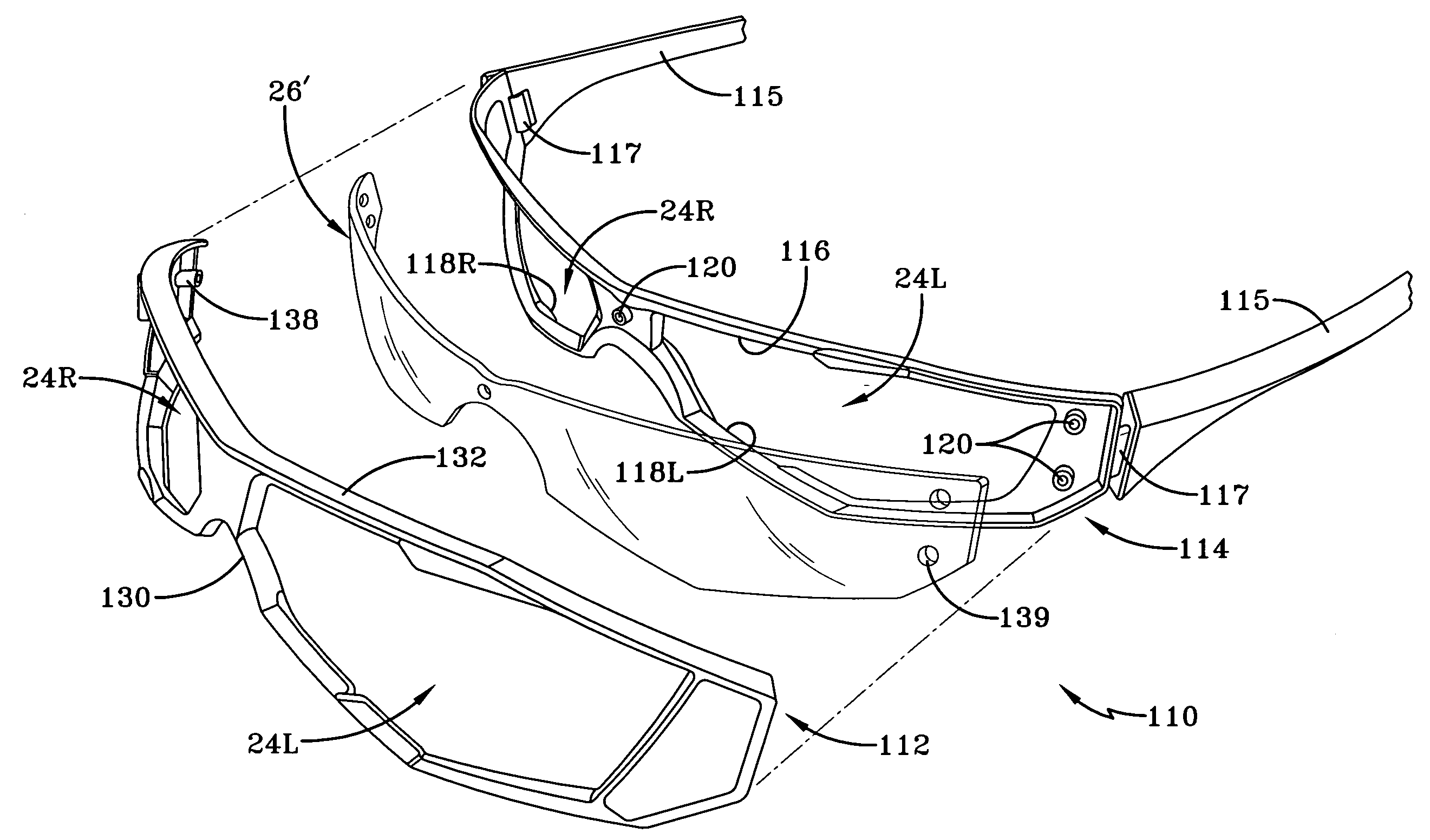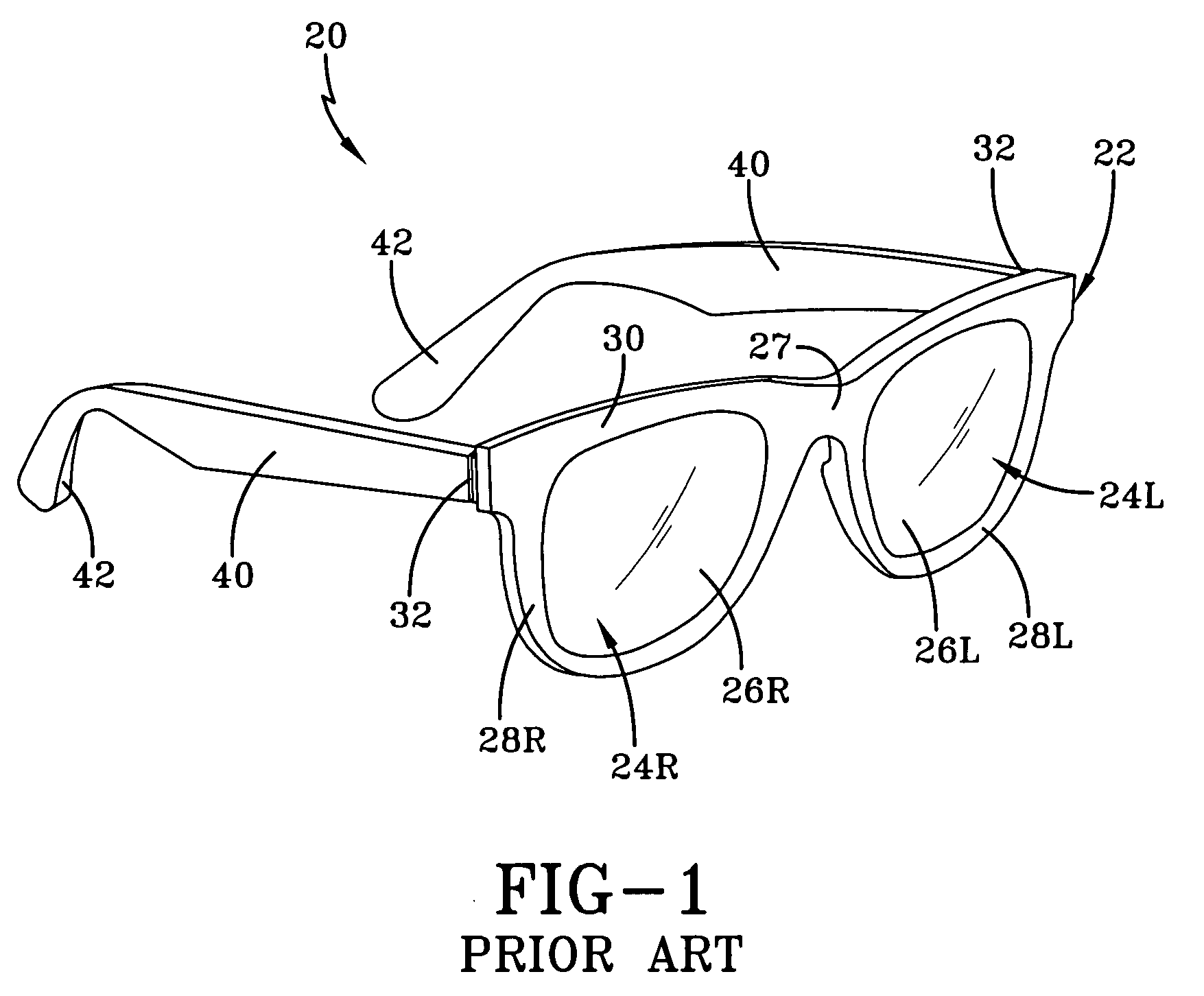Eyewear incorporating lenses with electronically variable optical properties
a technology of optical properties and lenses, applied in the field of eyewear, can solve the problems of not allowing the lens to be ground, unable to facilitate the assembly of eyewear with a specific electro-optic lens design, and unable to incorporate an electro-optic device into a prior art eyewear fram
- Summary
- Abstract
- Description
- Claims
- Application Information
AI Technical Summary
Benefits of technology
Problems solved by technology
Method used
Image
Examples
Embodiment Construction
[0043]Referring now to the drawings, and in particular to FIG. 1, it can be seen that a prior art eyewear assembly is designated generally by the numeral 20. It will further be appreciated that the eyewear assembly may also be referred to as glasses, spectacles, or the like. The eyewear assembly includes a frame 22 which provides at least one aperture 24 which carries a lens 26, which may also be referred to as an optical device. In most eyewear, it will be appreciated that two apertures are provided wherein each aperture is associated with the wearer's eye. Accordingly, the apertures, lenses and other related components associated with the wearer's left eye are provided with a capital letter L suffix and the aperture, lens and other components associated with the wearer's right eye are provided with a capital letter R suffix. The frame 22 may include a bridge 27 which separates a rim 28L from a rim 28R. And the frame may be provided in either a rimmed, semi-rimless or rimless confi...
PUM
 Login to View More
Login to View More Abstract
Description
Claims
Application Information
 Login to View More
Login to View More - R&D
- Intellectual Property
- Life Sciences
- Materials
- Tech Scout
- Unparalleled Data Quality
- Higher Quality Content
- 60% Fewer Hallucinations
Browse by: Latest US Patents, China's latest patents, Technical Efficacy Thesaurus, Application Domain, Technology Topic, Popular Technical Reports.
© 2025 PatSnap. All rights reserved.Legal|Privacy policy|Modern Slavery Act Transparency Statement|Sitemap|About US| Contact US: help@patsnap.com



